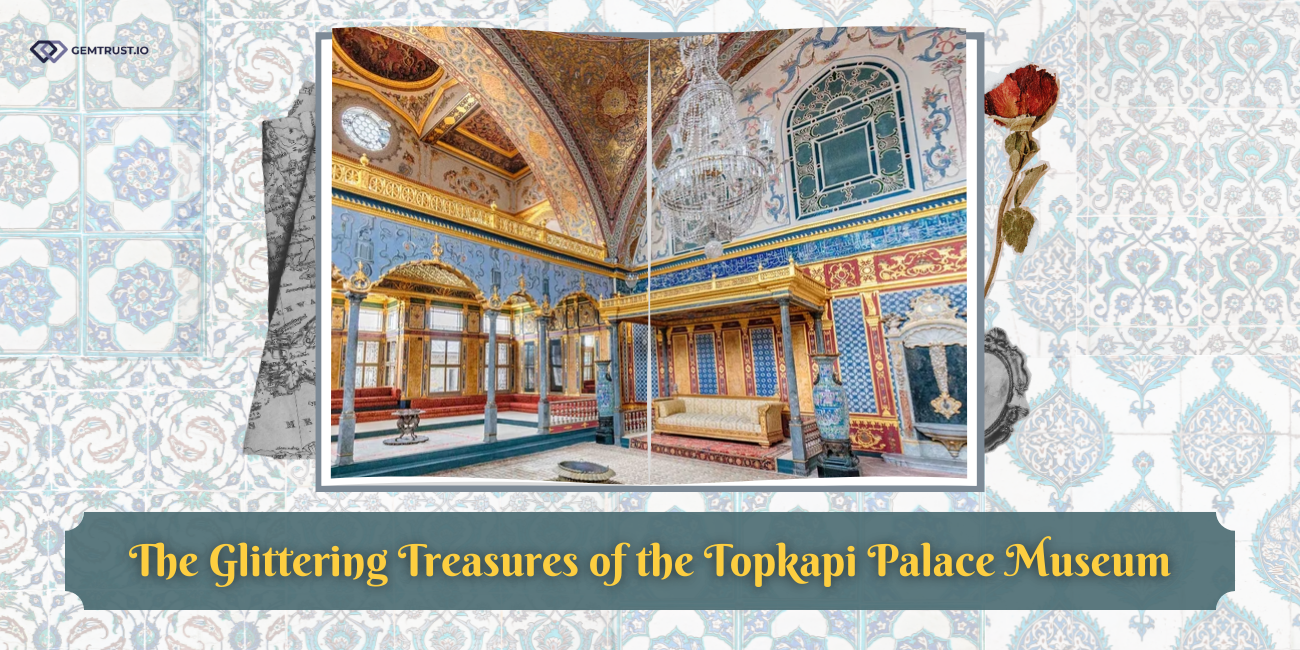
The Glittering Treasures of the Topkapi Palace Museum
By Nasim Ahmad, Accredited Gemologist, AIGS

Nestled on the historic Seraglio Point peninsula of Istanbul overlooking the Bosporus Strait and Marmara Sea, the Topkapi Palace Museum stands as a testament to the opulence and grandeur of the Ottoman Empire (ca. 1300 to early 20th century), which during its height spanned three continents from the Balkans in southeastern Europe across Central Asia to Arabia and North Africa. The Topkapi Palace served as the primary residence and administrative center of the empire's sultans for nearly 400 years, from 1465 to 1856, before being made into a museum in 1924. While the palace itself is a remarkable architectural marvel, it is the jewels collection within that truly captivates visitors from around the world.

The jewels collection within the Imperial Treasury of the Topkapi Palace Museum is nothing short of extraordinary. It offers a glimpse into the unparalleled wealth and extravagance of the Ottoman sultans. As one wanders through the opulent halls, one can't help but be mesmerized by the dazzling array of gemstones, precious metals, and intricate craftsmanship on display. The Treasury undoubtedly holds some of the world’s most outstanding examples of Ottoman design and the jeweler’s art.

Among the most famous jewels in the collection is the Spoonmaker's Diamond. This pear-shaped diamond, weighing an impressive 86 carats, is set within an intricately carved motif and surrounded by smaller diamonds. This magnificent gem was said to have been discovered by a poor fisherman who traded it for three wooden spoons. Another highlight is the famed Topkapi Dagger.

This dagger features a diamond-encrusted hilt set with three very large and magnificent Colombian emeralds, while its sheath is adorned with even more diamonds and precious gemstones alongside intricate gold filigree work. The dagger was commissioned by Sultan Mahmud I in the 18th century as a gift and peace offering to the Shah of Iran, Nadir Shah who ruled the Persian Empire from 1736 to 1747. Sadly, Nadir Shah was assassinated before the dagger could reach him. In Jules Dassin’s 1964 feature film, Topkapi, the Greek actor Melina Mercouri plays a thief plotting to steal a priceless emerald-studded dagger from a glass case in the imperial treasury.

The Imperial Treasury also houses several magnificent thrones such as the Shah Ismail Throne (built by Indian craftsmen and gifted by Nadir Shah) entirely covered by gold thread, natural pearls, rubies, and emeralds. The Arife Throne belonging to Sultan Ahmed I is a breathtaking example of 17th century classical Ottoman art and was inlaid with mother-of-pearl and numerous precious stones. It was designed by Mehmed Ağa, the architect of the Blue Mosque. The Bayram Throne is sculpted from solid gold and set with 955 precious topazes.

In addition to these exceptional pieces, the Topkapi Palace Museum's jewels collection boasts an array of other spectacular jewelry, including tiaras, necklaces, and earrings, royal seals, gem-encrusted flasks, cups and cutlery each with its own rich history and unique design. There are even books and copies of the Holy Quran meticulously covered with precious stones and pearls. Outstanding emeralds were set in flamboyant turban ornaments called sorguç. A sorguç, which is the East's equivalent to the West's crown, is a symbol of power and authority that was worn by Ottoman sultans on their quilted turbans.
In conclusion, the jewels collection at the Topkapi Palace Museum is a treasure trove of historical and artistic significance. It offers a window into the lavish world of the Ottoman sultans and their appreciation for the beauty of gemstones and craftsmanship. As visitors marvel at these extraordinary jewels, they are transported back in time to an era of splendor and magnificence, where diamonds, emeralds, and rubies were more than just precious stones—they were symbols of power, prestige, and beauty for one of the most remarkable empires the world ever saw.

References: Encyclopedia Britannica, Nasim Ahmad A.G., AIGS
